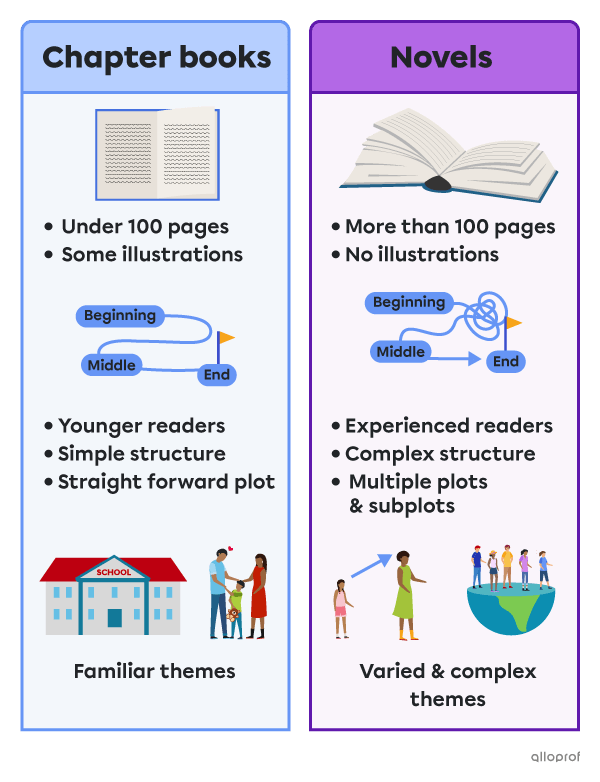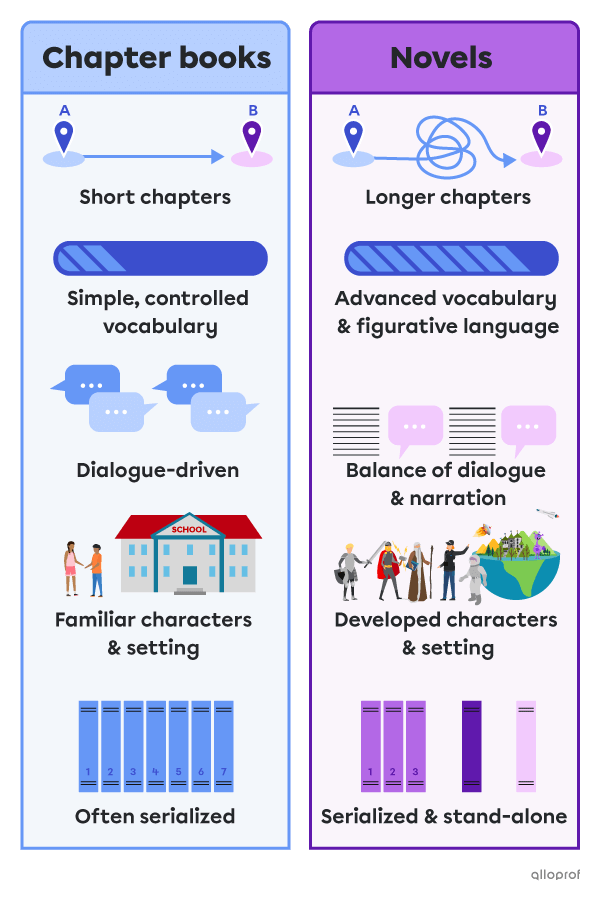Subjects
Grades
Chapter Books and novels are books that tell stories divided into parts called chapters.
Chapter books are shorter and tell simpler stories than novels.
Here are the key differences between chapter books and novels.
| Chapter Books | Novels | |
| Length | short | longer |
| under 100 pages | over 100 pages | |
| Illustrations | contain illustrations to support the text | rarely contain illustrations |
| Reading level | suitable for younger readers | for more experienced readers |
| (6-10 years old) | (10 years old and up) | |
| Structure | simple stories | more complex stories |
| with a clear beginning, middle and end | using varied literary devices | |
| Plot | generally one main plotline | possibly multiple plots |
| straightforward and linear | possibly connected subplots | |
| Themes | relatable and familiar | wider range and more complex themes |
| ex: family, friendship or school | ex: coming of age and broader social issues |

Here are some common elements in chapter books and novels.
| Chapter books | Novels | |
| Chapters | short chapters | longer chapters |
| focusing on 1 story element | with multiple story elements | |
| Vocabulary | simple vocabulary | advanced vocabulary |
| to help with the fluency of reading | use of figurative language | |
| Dialogue | dialogue-driven stories | balance of dialogue and narration |
| with some narration | ||
| ex: descriptions, exposition… | ||
| Characters & setting | relatable | more varied |
| familiar to the reader | detailed & developed | |
| Series | often serialized stories | may be serialized |
| may be standalone stories |
